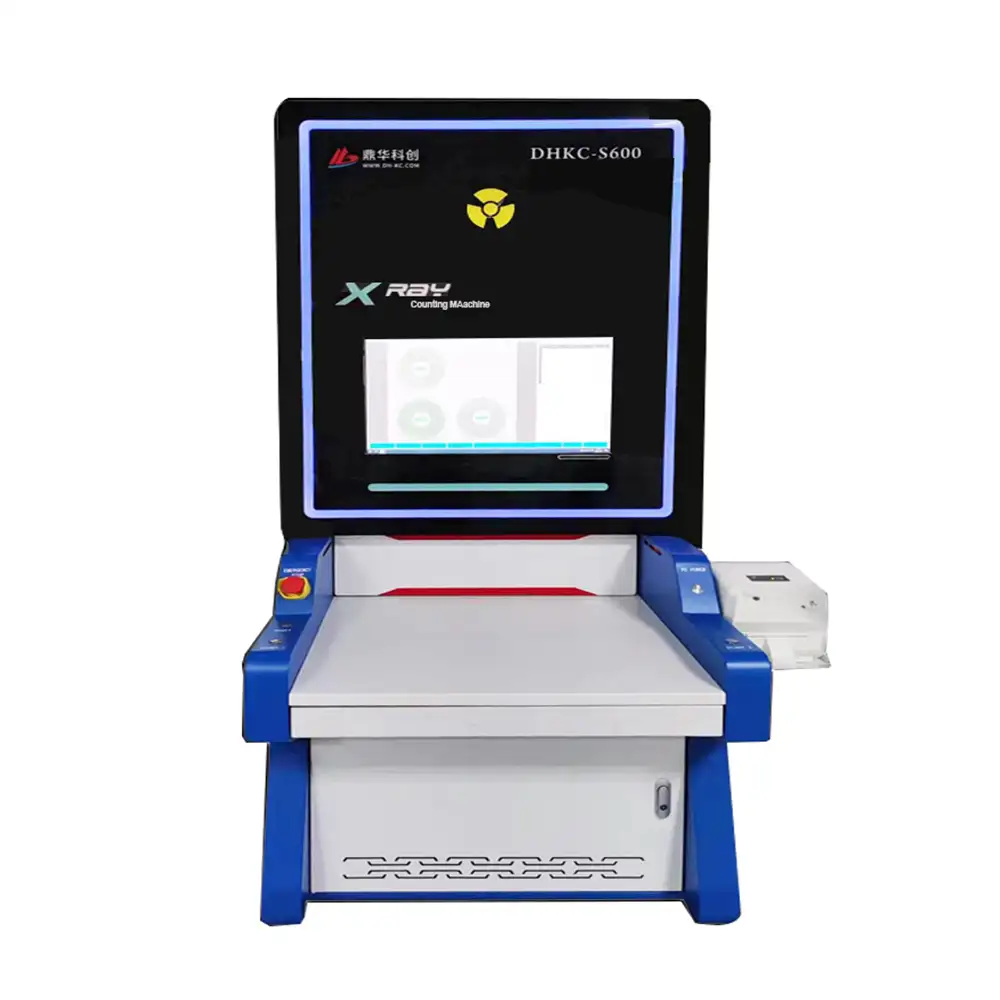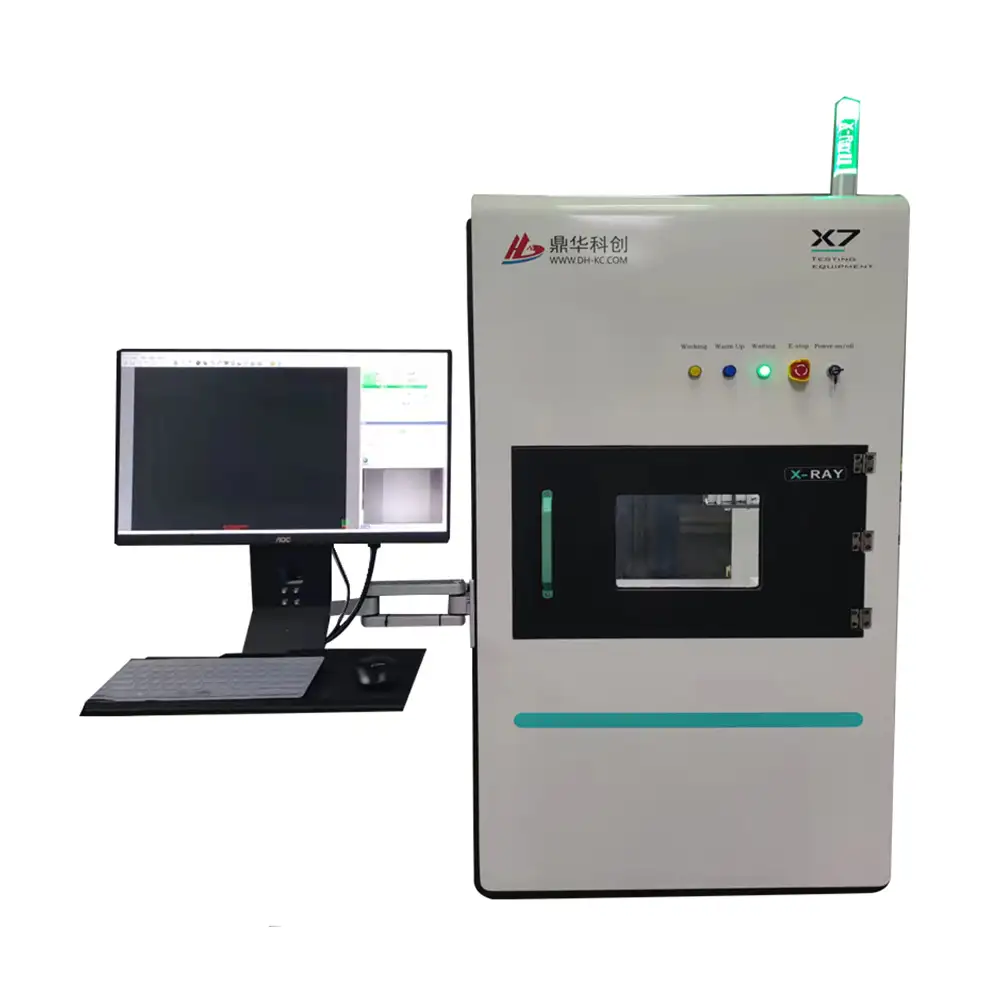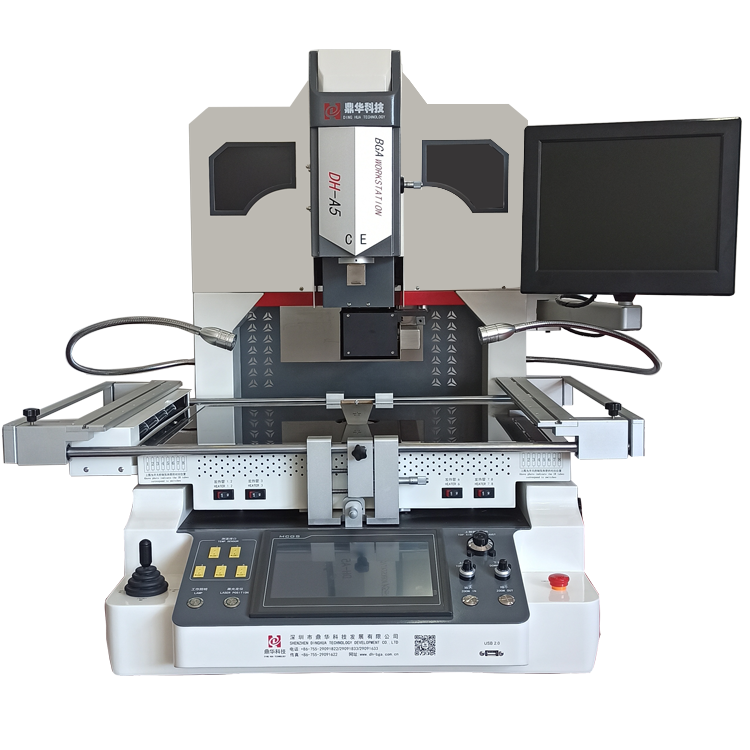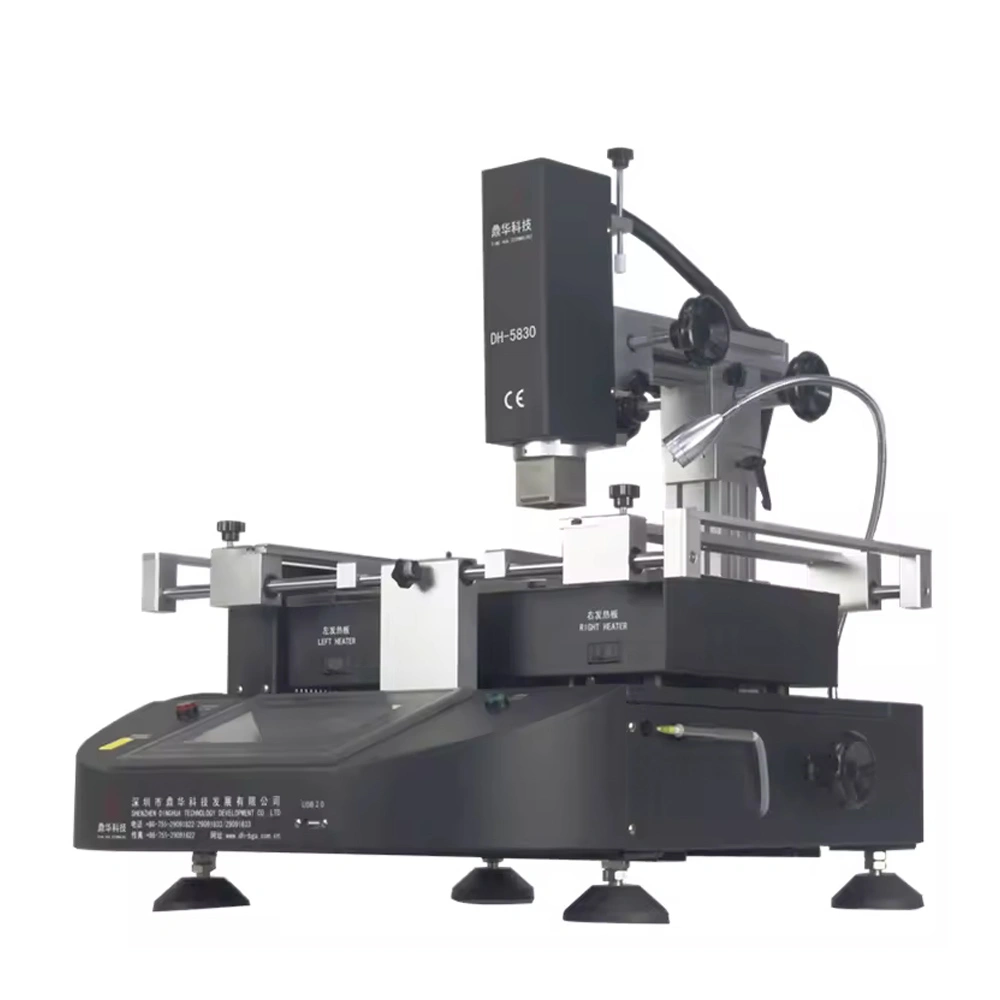Professional Equipment Manufacturer
 Esperanto
Esperanto
 Shqiptare
Shqiptare
 Euskara
Euskara
 Zulu
Zulu
 Latinus
Latinus
 Cymraeg
Cymraeg
 தமிழ்
தமிழ்
 Slovak
Slovak
 Slovak
Slovak
 Afrikaans
Afrikaans
The Essential Guide to BGA Rework Stations: Boosting Your Equipment Maintenance Strategy
2025-06-18
The Essential Guide to BGA Rework Stations: Boosting Your Equipment Maintenance Strategy
Table of Contents
- What is BGA Rework?
- Importance of BGA Rework Stations in Equipment Maintenance
- Types of BGA Rework Stations
- Key Features to Consider When Choosing a BGA Rework Station
- Step-by-Step BGA Rework Process
- Common Issues in BGA Rework and Their Solutions
- Best Practices for Maintaining BGA Rework Stations
- Conclusion
- FAQs
What is BGA Rework?
BGA, or Ball Grid Array, rework is a critical process in the electronics repair industry. This technique involves the repair, replacement, or reballing of components that are mounted on circuit boards using a grid of solder balls. BGA components offer superior performance and thermal efficiency, making them a popular choice in modern electronics. However, the downside is that they can be challenging to work with when issues arise.
The BGA rework process requires specialized equipment, known as BGA rework stations, to ensure that repairs are performed accurately and efficiently. These stations utilize precision heating technologies, advanced optics, and various tooling to facilitate the delicate process of removing and replacing BGAs.
Importance of BGA Rework Stations in Equipment Maintenance
The significance of BGA rework stations cannot be overstated. In the realm of industrial equipment maintenance, these stations serve as crucial tools for ensuring the longevity and reliability of electronic devices. Here are some key benefits:
Cost Efficiency
Repairing defective BGA components is often more cost-effective than replacing entire circuit boards or systems. BGA rework stations allow technicians to perform precise repairs, significantly reducing operational costs.
Improved Equipment Lifespan
By utilizing BGA rework stations, technicians can extend the lifespan of equipment. Timely repairs prevent the escalation of issues, ensuring that machinery continues to function optimally.
Enhanced Performance
Properly functioning BGA components contribute to the overall performance of equipment. By addressing BGA-related issues quickly, organizations can maintain high performance and efficiency levels.
Types of BGA Rework Stations
Different types of BGA rework stations cater to various operational needs. Understanding these types helps in selecting the right equipment for specific maintenance tasks.
Infrared BGA Rework Stations
Infrared BGA rework stations use infrared heating technology to provide uniform heat distribution. This type is ideal for sensitive components that require precise temperature control.
Hot Air BGA Rework Stations
Hot air rework stations utilize hot air guns to heat and remove BGA components. They are versatile and can be used for various types of components, making them a popular choice among technicians.
Laser BGA Rework Stations
Laser rework stations offer the highest precision in BGA repairs. By using focused laser beams, these stations can easily remove BGA components without affecting adjacent parts, making them suitable for high-density circuit boards.
Key Features to Consider When Choosing a BGA Rework Station
When selecting a BGA rework station, it is essential to evaluate various features to ensure it meets your operational needs. Here are key aspects to consider:
Temperature Control
Precision temperature control is crucial for BGA rework. Look for stations with adjustable temperature settings and real-time temperature monitoring to avoid damaging components.
Ease of Use
A user-friendly interface is important for effective operation. Choose stations with intuitive controls and comprehensive manuals or guides for easy training and operation.
Portability
Depending on your operational setup, you might need a portable rework station. Consider the size and weight of the unit, especially if repairs will be performed in various locations.
Tooling and Accessories
Evaluate the tooling and accessories that come with the rework station. Utilizing the right tools, such as alignment fixtures and nozzles, can significantly enhance repair accuracy and efficiency.
Step-by-Step BGA Rework Process
Understanding the step-by-step BGA rework process is essential for achieving optimal results. Here’s a detailed breakdown:
Step 1: Preparation
Begin by gathering all necessary tools and equipment, including the BGA rework station, solder paste, and any required safety gear. Ensure that the work area is clean and organized to prevent contamination.
Step 2: Component Removal
Using the rework station, carefully apply heat to the BGA component to melt the solder. Once the solder is molten, gently lift the component off the PCB using appropriate tools.
Step 3: Cleaning the PCB
After removal, clean the area where the BGA was attached. Use a suitable solvent to remove any residual solder and debris, ensuring a smooth surface for the new component.
Step 4: Reballing (if necessary)
If the existing BGA is to be reused, it may require reballing. Apply new solder balls according to the manufacturer's specifications, ensuring proper alignment and spacing.
Step 5: Reinstallation
Place the new or reball BGA onto the PCB, ensuring accurate alignment. Utilize the rework station to apply heat to the component, allowing the solder to melt and bond securely.
Step 6: Final Inspection
Perform a thorough inspection of the reworked area to ensure that the component is securely bonded and that there are no defects. Utilize magnification tools as necessary to check the quality of the solder joints.
Common Issues in BGA Rework and Their Solutions
Even experienced technicians can encounter challenges during the BGA rework process. Here are some common issues and effective solutions:
Issue 1: Insufficient Heating
**Problem:** Insufficient heating can lead to cold solder joints.
**Solution:** Ensure that the temperature settings are accurate and that the heating element is functioning properly. Consider using a thermocouple to monitor the temperature.
Issue 2: Misalignment of BGA Components
**Problem:** Misalignment can lead to poor electrical connections.
**Solution:** Use alignment fixtures to guide the placement of BGA components accurately, ensuring that they are positioned correctly before soldering.
Issue 3: Contamination of the PCB
**Problem:** Contaminated surfaces can affect solder adhesion.
**Solution:** Always clean the PCB thoroughly before reworking. Use isopropyl alcohol or specialized cleaning agents to ensure that the area is free of contaminants.
Best Practices for Maintaining BGA Rework Stations
To ensure the longevity and optimal performance of BGA rework stations, it is essential to follow best maintenance practices:
Regular Cleaning
Maintain cleanliness by regularly cleaning the station, including nozzles and heating elements. Dust and debris can affect performance and lead to poor results.
Calibration
Periodically calibrate the temperature settings of your rework station to ensure accuracy. This will help maintain consistent performance and quality in repairs.
Inspection of Tools
Regularly inspect all tools and accessories for wear and tear. Replace any damaged parts promptly to prevent further issues during the rework process.
Training and Skills Development
Invest in ongoing training for technicians operating BGA rework stations. Staying updated with the latest techniques and technologies can enhance repair quality and efficiency.
Conclusion
BGA rework stations play a pivotal role in equipment maintenance, providing a cost-effective solution for repairing essential components in modern electronics. By understanding the types of stations available, their key features, and the BGA rework process, technicians can enhance their repair strategies, improve performance, and extend the lifespan of equipment. Implementing best practices for maintenance and troubleshooting will ensure that BGA rework stations remain reliable tools in any maintenance strategy.
FAQs
1. What is the average lifespan of a BGA rework station?
The lifespan of a BGA rework station can vary based on usage and maintenance, but with proper care, they can last several years.
2. Can I use a BGA rework station for other types of components?
Yes, many BGA rework stations are versatile and can be used for various types of components beyond BGAs, including QFNs and CSPs.
3. What safety precautions should I take when using a BGA rework station?
Always wear appropriate safety gear, including goggles and gloves. Ensure proper ventilation in the work area to avoid inhaling fumes from soldering.
4. How often should I calibrate my BGA rework station?
Calibration frequency can depend on usage. It is advisable to calibrate at least once a month or whenever you notice inconsistencies in temperature readings.
5. Where can I find replacement parts for my BGA rework station?
Replacement parts can usually be ordered from the manufacturer or authorized distributors. It's essential to use genuine parts for optimal performance.
Keywords:
Related News
The Essential Guide to BGA Rework Stations: Boosting Your Equipment Maintenance Strategy
The Essential Guide to BGA Rework Stations: Boosting Your Equipment Maintenance Strategy Table of Contents What is BGA Rework? Importance of BGA Rework Stations in Equipment Maintenance Types of BGA Rework Stations Key Features to Consider When Choosing a BGA Rework Station Step-by-Step BGA Rework Process Common Issues in BGA Rework and Their Solutions Best Practices for Maintaining BGA Rework St
Maximizing Efficiency with BGA Rework Stations for Industrial Maintenance
In the realm of industrial equipment maintenance, BGA rework stations are indispensable tools that facilitate the repair and replacement of BGAs—components prevalent in modern electronic devices. These devices are often critical to the functionality of various industrial machines, making efficient maintenance a priority for service providers. A BGA rework station is designed to handle the specific
The Crucial Role of BGA Rework Machines in Modern Industrial Equipment Repair
The Crucial Role of BGA Rework Machines in Modern Industrial Equipment Repair Table of Contents 1. Introduction to BGA Rework Machines 2. Understanding BGA Technology 3. Importance of BGA Rework Machines in Industrial Equipment Repair 4. How BGA Rework Machines Work 4.1. Key Components of BGA Rework Machines 4.2. The BGA Rework Process Explained 5. Advantages of Using BGA Rework Machines 5.1. Incr
Mastering BGA Soldering Stations: Essential Insights for Industrial Equipment Maintenance
BGA soldering stations are crucial tools in the realm of industrial equipment maintenance and installation, especially when dealing with complex circuit boards that utilize Ball Grid Array (BGA) technology. These stations are designed to efficiently handle the soldering and desoldering of BGA components, which can significantly impact the reliability and performance of electronic devices. One of t



















